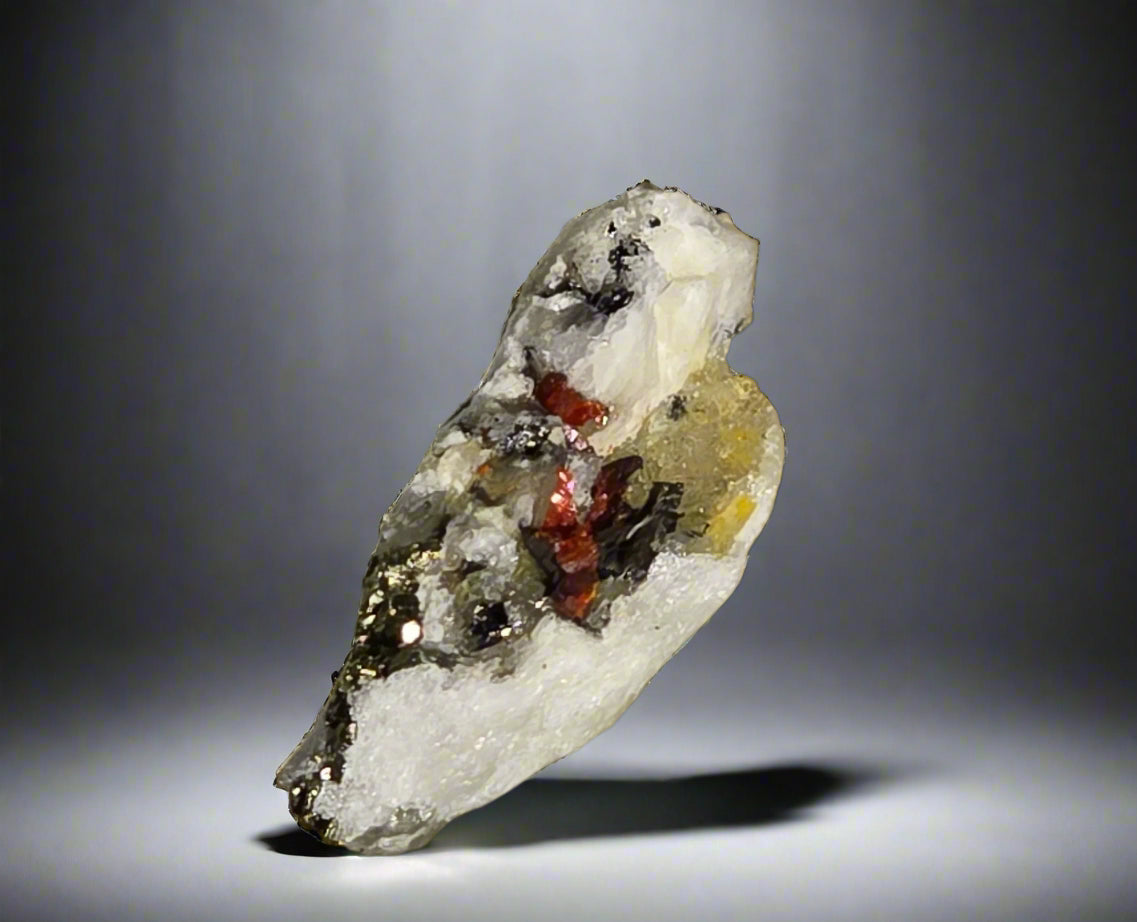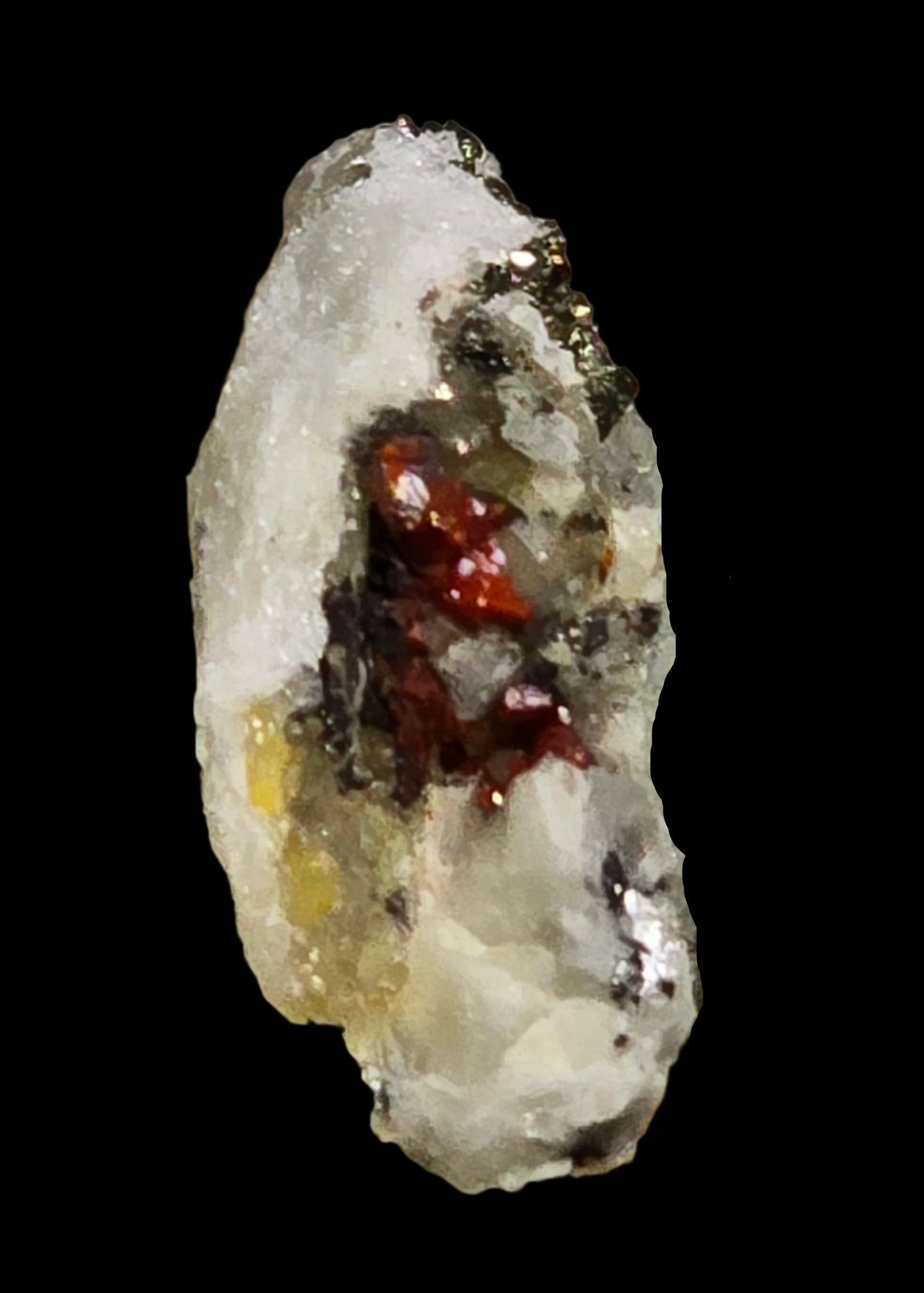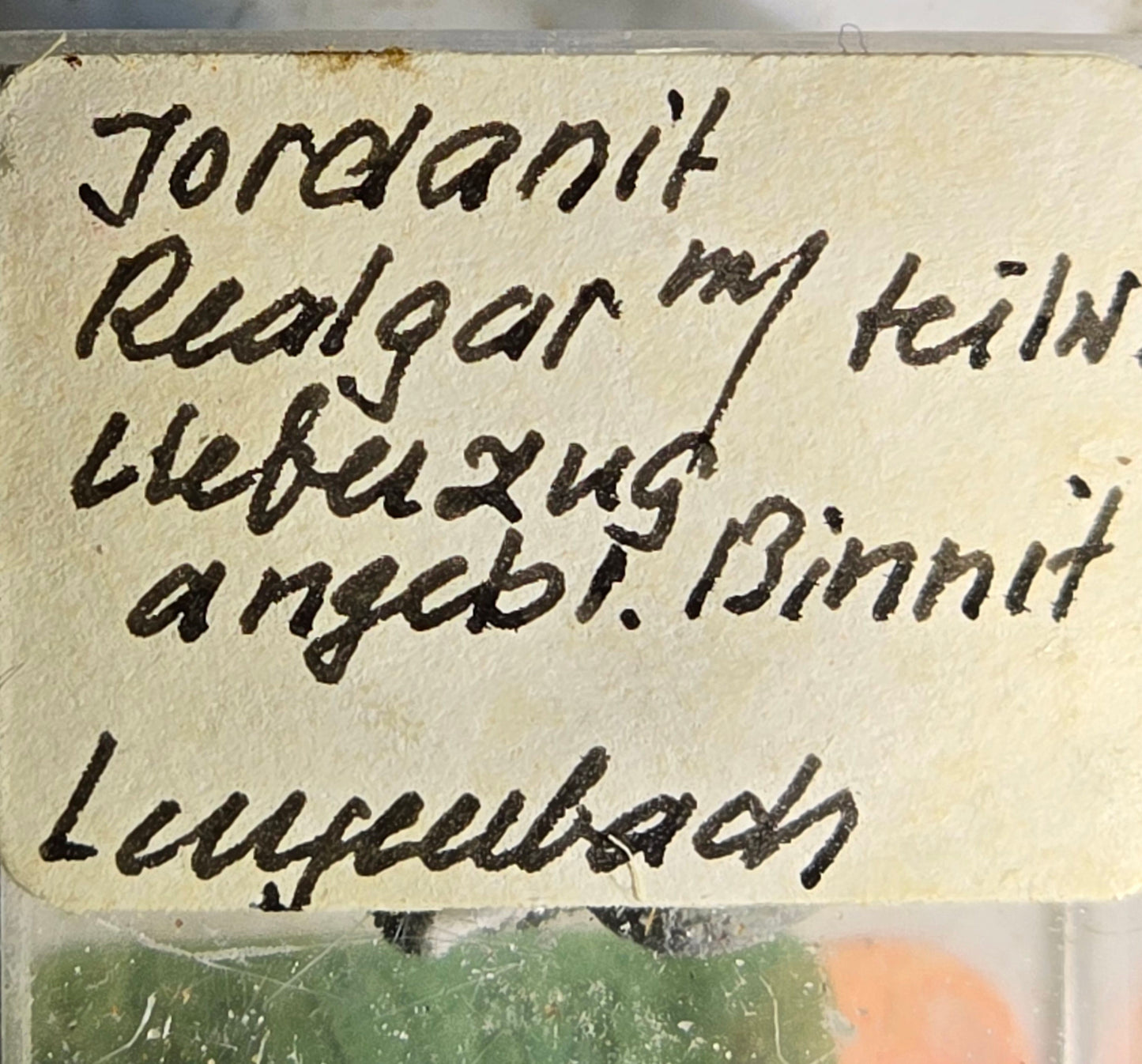CRYSTALS2COLLECT A.C.N 651.525.727 Pty Ltd
REALGAR (AURIPIGMENT) with JORDANITE, covered partially with most likely BINNITE (Tennantite) from the Lengenbach Quarry (micro and miniature)
REALGAR (AURIPIGMENT) with JORDANITE, covered partially with most likely BINNITE (Tennantite) from the Lengenbach Quarry (micro and miniature)
Couldn't load pickup availability
A very rare and older specimen from the Lengenbach Quarry.
Realgar, also referred to as arsenic blende, ruby sulfur, or ruby of arsenic, is a mineral composed of arsenic sulfide with the chemical formula α-As4S4. This soft and sectile mineral typically forms in monoclinic crystals or appears in granular, compact, or powdery forms, often found alongside the related mineral orpiment (As2S3). Characterized by its orange-red hue, realgar melts at 320 °C and burns with a bluish flame, emitting arsenic and sulfur fumes. It has a Mohs hardness ranging from 1.5 to 2 and a specific gravity of 3.5, with an orange streak. Realgar is trimorphous, existing in forms such as pararealgar and bonazziite.
TOXIC, DO NOT EXPOSE TO LIGHT (DESINTEGRATES)
Jordanite is a sulfosalt mineral characterized by the chemical formula Pb14(As,Sb)6S23 and belongs to the monoclinic crystal system. It was named in honor of the German scientist H. Jordan, who identified it in 1864. This mineral typically exhibits a lead-grey color, often with an iridescent tarnish, and has a black streak along with a metallic luster. With a hardness of 3 on the Mohs scale and a density of around 6.4, Jordanite also features a conchoidal fracture. The mineral's type locality is the Lengenbach Quarry located in the Binn Valley of Wallis, Switzerland.
Tennantite is a copper arsenic sulfosalt mineral characterized by the formula Cu12As4S13, although variations occur due to the substitution of copper with iron and zinc, leading to the formula Cu6[Cu4(Fe,Zn)2]As4S13. This mineral typically exhibits colors ranging from gray-black to steel-gray, iron-gray, or black. It is closely related to tetrahedrite (Cu12Sb4S13), which contains antimony in place of arsenic, and the two minerals form a solid solution series, making them challenging to differentiate due to their similar properties. Substitutions of iron, zinc, and silver can account for up to 15% of the copper content. First identified in Cornwall, England, in 1819, tennantite appears as small cubic or dodecahedral crystals and is named after the English chemist Smithson Tennant.
Tennantite is typically found in hydrothermal veins and contact metamorphic deposits, often occurring alongside other copper-lead-zinc-silver sulfides and sulfosalts, as well as minerals like pyrite, calcite, dolomite, siderite, barite, fluorite, and quartz. The presence of arsenic in tennantite contributes to the hardness of the metal produced from the ore, resulting in a copper-arsenic alloy. Research in the late 20th century revealed that arsenical coppers were more prevalent in ancient metallurgy than previously thought, suggesting that the smelting of ores like tennantite played a crucial role in the technological advancements leading to the Bronze Age. The silver bearing Tennantite is called Binnite, like this specimen.
This specimen is originally labeled "1987-88". Jordanit, Realgar mit teilweise Ueberzug angeblich Binnit ( Translation: "Jordanite, Realgar partially covered most likely with Binnite)
Shipping & Returns
Shipping & Returns
Dimensions
Dimensions
Share
Image with text
Pair text with an image to focus on your chosen product, collection, or blog post. Add details on availability, style, or even provide a review.
-
Free Shipping
Pair text with an image to focus on your chosen product, collection, or blog post. Add details on availability, style, or even provide a review.
-
Hassle-Free Exchanges
Pair text with an image to focus on your chosen product, collection, or blog post. Add details on availability, style, or even provide a review.






